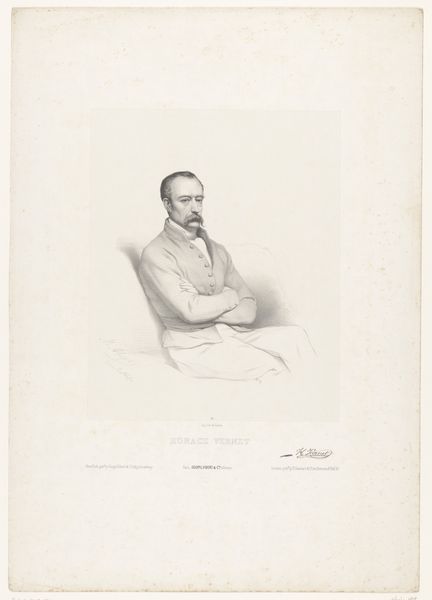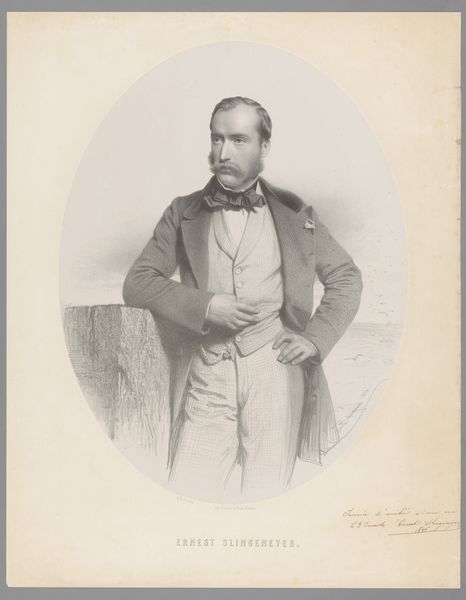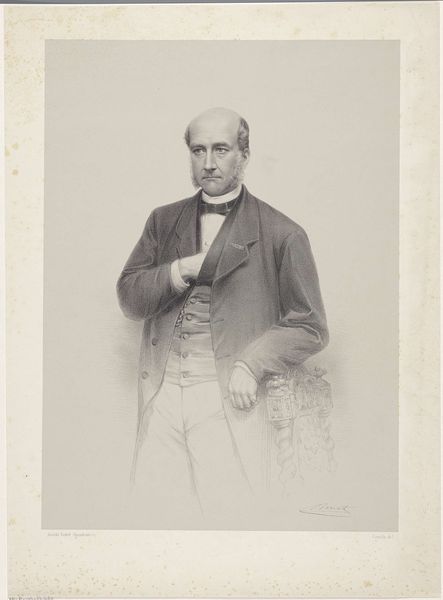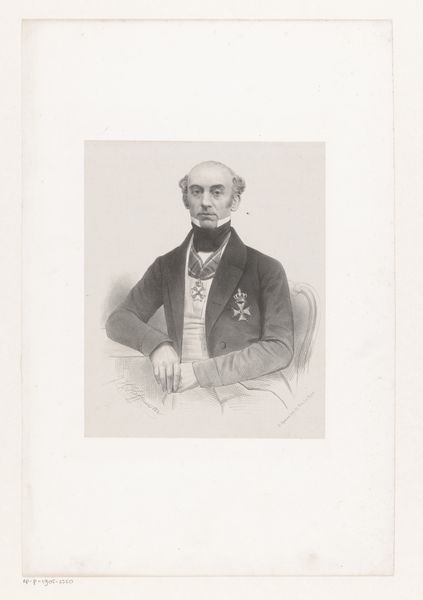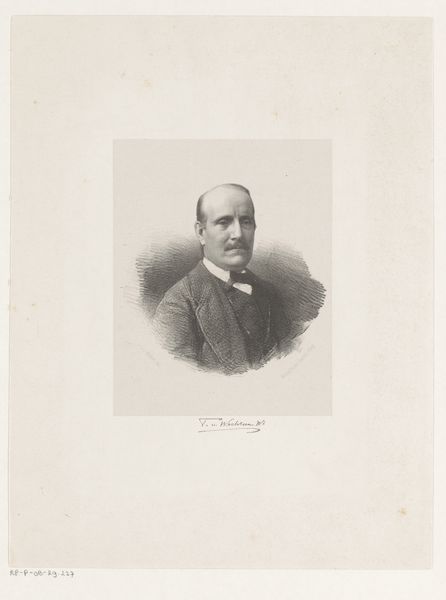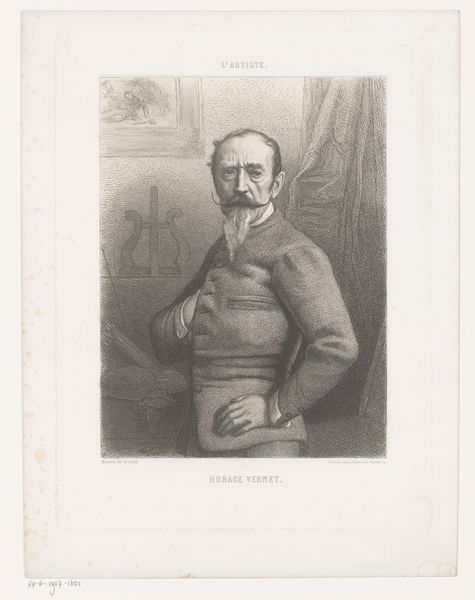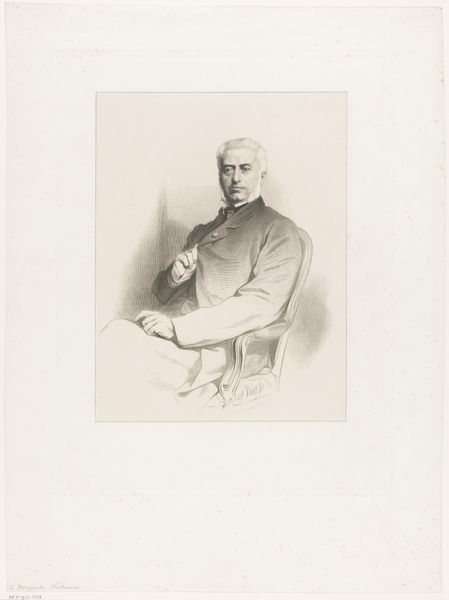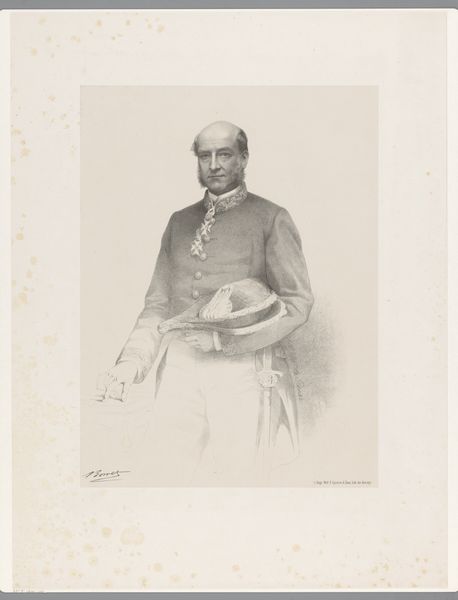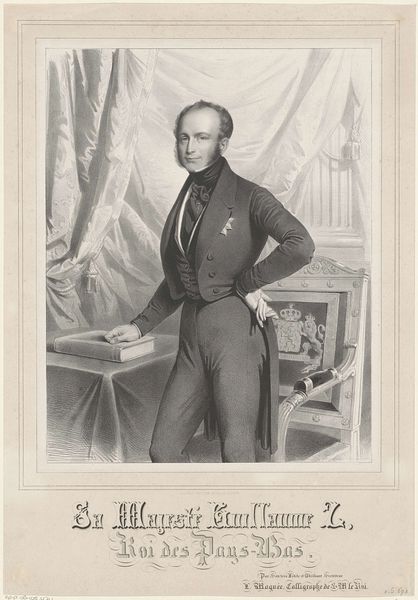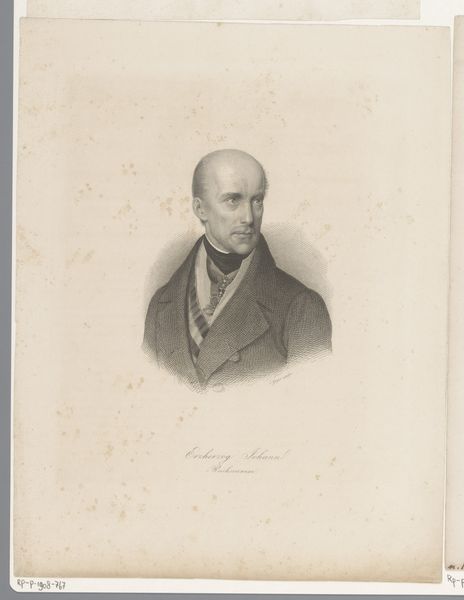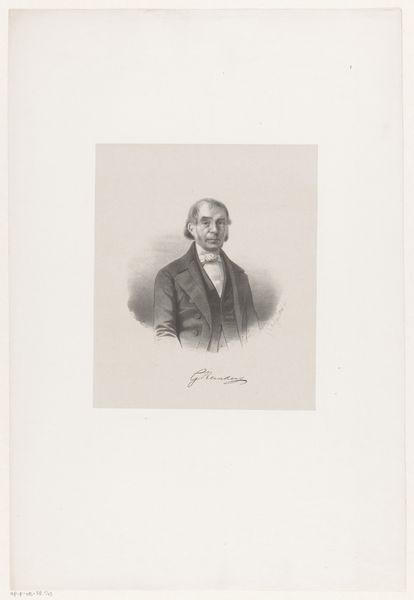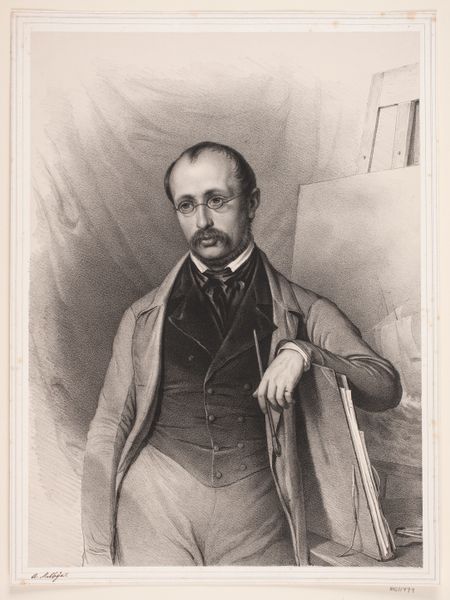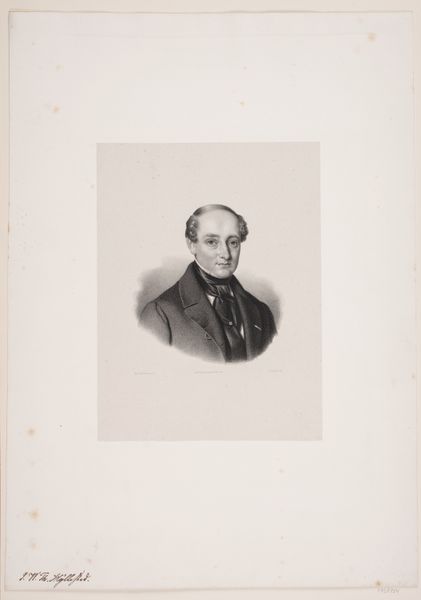
drawing, pencil
#
portrait
#
pencil drawn
#
drawing
#
pencil sketch
#
pencil drawing
#
pencil
#
portrait drawing
#
history-painting
#
academic-art
#
realism
Dimensions: height 600 mm, width 450 mm
Copyright: Rijks Museum: Open Domain
This is a portrait of Hippoliet van Peene, created in 1851 by Ch. Scheyrs. It’s a lithograph, which is a printmaking process using a flat stone or metal plate. The artist draws an image with a greasy substance, then applies ink, which sticks only to the drawn areas. Looking at the image, you can see the fineness of the lines, achieved through the lithographic process. The shading creates depth and volume, giving the portrait a lifelike quality. Lithography was a relatively new technology in the 19th century, making art more accessible to a wider audience through mass production. Consider the labor involved in creating the image, from grinding the stone, to carefully applying the ink. This reflects the rise of industrialization and new forms of labor in the 19th century. So, next time you look at a print, think about the material qualities of the artwork, and how they connect to wider social issues like labor, politics, and consumption.
Comments
No comments
Be the first to comment and join the conversation on the ultimate creative platform.
